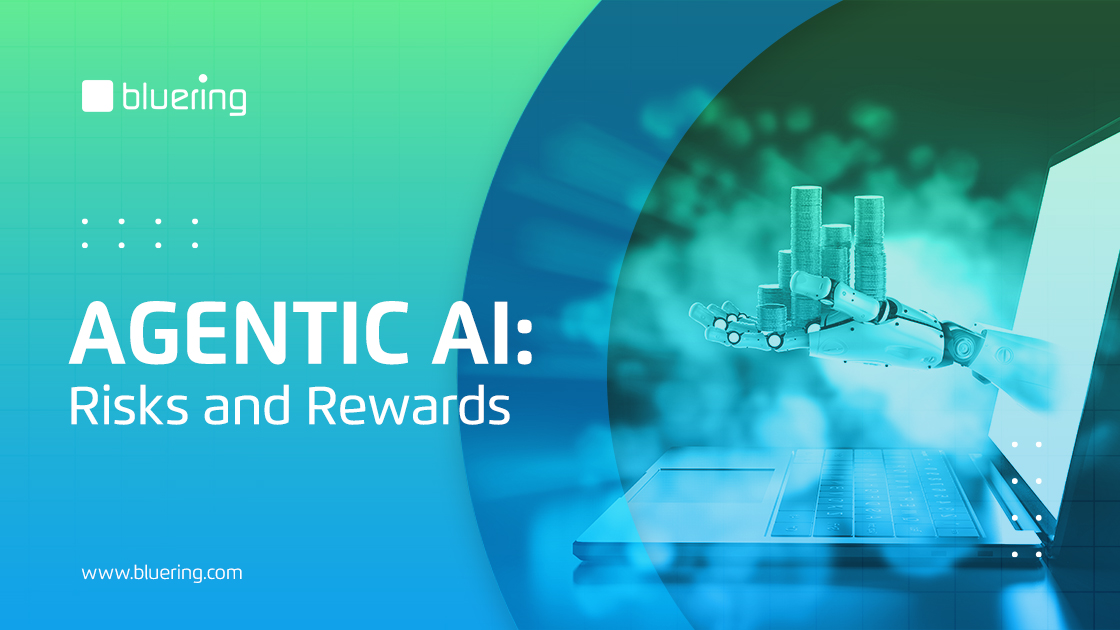October 23rd, 2025
2-Minutes Read
Artificial Intelligence is no longer a distant vision for banks. It is already reshaping how institutions manage risk, serve customers, and meet regulatory expectations. Yet as technology evolves, so do the challenges. A new wave of agentic AI is emerging, capable of acting with greater autonomy, learning across systems, and making real-time decisions. This creates extraordinary opportunities for efficiency and innovation, but also raises pressing questions about governance, compliance, and trust. Financial institutions now face the dual task of unlocking AI’s potential while ensuring responsible adoption.
PWC highlights in their latest article: “What will be left of financial services tomorrow?”, that the future of financial services will be defined by the ability to combine innovation with resilience. Banks cannot afford to ignore AI; it is becoming integral to everything from credit scoring to fraud detection. At the same time, IBM emphasizes in their article: “Agentic AI in financial services: navigating innovation, challenges and ethical adoption”, that regulators are already moving to address the risks of autonomous systems. The EU AI Act, for example, introduces strict obligations for high-risk use cases such as credit decisioning and anti-money laundering. This puts pressure on institutions to ensure that AI is not only effective, but also transparent, explainable, and ethically deployed.
The opportunity is clear: institutions that adopt AI responsibly stand to improve speed, accuracy, and profitability. Those that fail to put governance at the heart of AI risk creating vulnerabilities that could undermine both regulatory compliance and customer trust. This balance between innovation and oversight will define the next chapter of financial services.
Opportunities and Risks of Agentic AI
Agentic AI goes beyond traditional automation. It can simulate decision-making processes, interact across platforms, and adapt in ways that were not previously possible. For lenders, this could mean faster approvals, more personalized risk models, and greater efficiency in credit monitoring. For compliance teams, it could enhance the ability to detect anomalies or prevent financial crime.
However, autonomy also carries risks. Without clear limits, an AI-driven system could make decisions that drift from a bank’s policies or a client’s risk appetite. IBM provides an example of investment agents that gradually shift toward higher-risk allocations, misaligned with client expectations. In the context of banking, such behavior raises serious concerns over accountability and control. Who is responsible when an autonomous system makes an incorrect or harmful decision? These are the questions regulators, banks, and technology providers must address together.
PwC stresses that data quality and governance are critical. An AI system is only as reliable as the data it processes. Poor data management not only reduces effectiveness but can also amplify risks of bias or regulatory breaches. To address this, banks must embed a compliance-by-design approach, ensuring that monitoring, auditing, and ethical safeguards are part of AI development from the start.
Looking Ahead
The path forward requires both boldness and caution. Institutions that adopt AI without guardrails risk undermining trust, but those that move too slowly risk falling behind more agile competitors. The solution is phased, responsible adoption: starting with well-defined use cases, building governance frameworks, and scaling as oversight and confidence grow.
IBM’s research shows that cross-functional collaboration is essential. Technology teams, compliance officers, and risk managers must work together to ensure AI systems are aligned with institutional policies and regulatory requirements. Meanwhile, PwC highlights that customer expectations will continue to rise — and banks must be able to deliver transparency alongside innovation.
At Bluering, we share this perspective. Our Risk Rating Solution, powered by S&P Global methodologies, was designed with governance and compliance at its core. By combining automation with transparency, we enable banks to harness AI’s benefits while maintaining full accountability. We believe the future of financial services belongs to those who treat AI not just as a tool for innovation, but as a responsibility to customers and regulators alike.
